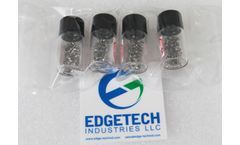Refine by
Implantable Medical Device Articles & Analysis
13 articles found
These small yet essential components ensure visibility, precise positioning, and contribute to the success of medical implants and device placement procedures. Tantalum is a biocompatible metal with excellent radiopacity, making it an ideal material for medical marker bands. The benefits of using tantalum radiopaque marker ...
What is biofilm? Biofilms are defined as communities of micro-organisms attached to a surface, or one another, and encased within a matrix of extracellular polymeric substance (EPS). The EPS makes up the largest component of the biofilm, and in the biological environment is generally composed of polysaccharides, proteins, glycolipids, blood products, cellular debris, extracellular enzymes, metal ...
This growth is propelled by their extensive use in sectors such as construction, automotive, electronics, medical, and personal care. Key Drivers of Silicone Market Growth Construction Industry: The demand for silicone in the construction industry is rising due to its application in sealants, adhesives, and coatings. ...
In biomedical engineering, hydrophobic polymers are used in the development of medical devices, implants, and drug delivery systems. Their water-repellent properties help prevent bacterial adhesion, ensuring the safety and efficacy of these devices. ...
These devices may be categorised by their intended use and range from simple non-invasive items to fully implantable devices. The Medical Device Directive 93/42/EEC (MDD) is a regulation that sets out the essential requirements that medical devices must meet before they can be ...
Why Do You Need One? A medical battery pack is an essential part of any medical device. It provides power to the device when no other power source is available. This kinf of battery pack can be used on a number of devices, including portable defibrillators, heart monitors and other life-saving devices. There are many different types of medical battery pack manufacturing on the market today. ...
The QUEST study (High-FreQUEncy Nerve Block for PoST-Amputation Pain), is a randomized controlled study of 180 patients at 25 clinical study sites in the U.S. Recruitment for the study was completed in late 2021. Results are blinded until after participants have finished a twelve-month follow-up. ...
For patients who currently have an implanted electrical medical device, physicians must verify compatibility with the implanted device during implantation of the system. ...
ByCVRx
Nitinol can make the magic shop spoon bend in hot water also because of its shape memory function Nitinol's superelasticity and biocompatibility make it an ideal choice for manufacturing a variety of medical devices implanted in the human body. For example, a stent is a device that supports blood vessels and keeps them open. ...
General interest in the availability, efficiency and reliability of medical devices has never been so high. As with most things these days, this can be attributed to the COVID-19 pandemic. Close to the core of medical device performance are PTFE tubing and FEP sheets, both of which offers a huge array of ...
“With this expansion into polymers for textile-based medical devices, Evonik continues to strengthen its position as a preferred global partner for medical device companies. ...
The Indian Medical Devices industry is mostly import-dependent with no specific regulations in place till recent times. With the introduction of MDR (Medical Device Rules 2017) attempt has been made to harmonize the Indian medical device Industry as per globally prevailed ...
Magnetic resonance imaging (MRI) is a frequently used diagnostic imaging modality that may be an alternative to other types of radiologic imaging (e.g., computerized tomography, nuclear medicine imaging). It can detect soft tissue characteristics (e.g., inflammation), and because magnetic resonance (MR) uses a magnetic field and radio waves to produce images, it does not expose patients to ...













